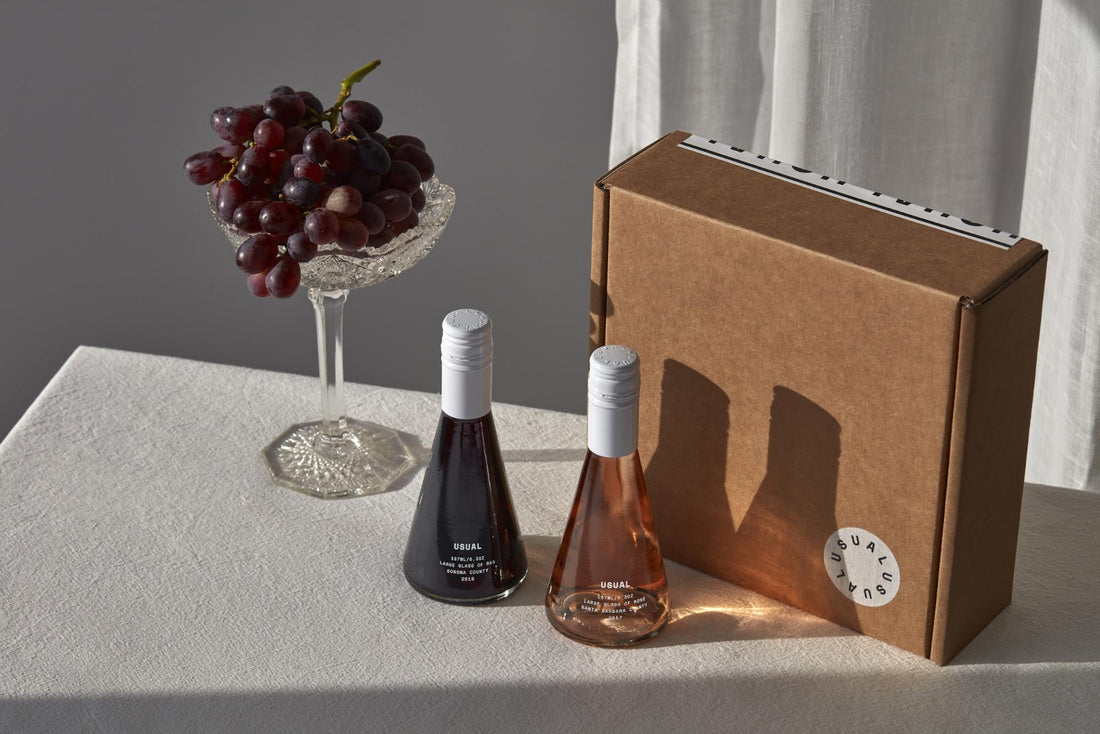
Calories in Wine: How to Indulge Without Ruining Your Health Goals
McKenzie HaganWe’ve been there. You’re sipping on the good stuff and suddenly you start wondering what exactly is in your slushy adult beverage or in the bottle of wine you’ve nearly finished. Finding the calorie count can be tricky. Most wine labels are totally eye-catching, but don’t really include any nutrition facts like other foods and drinks do.
Are there calories in wine? Yes. Your first response might be to say “yikes” — especially if you just finished a couple of glasses — but there’s more to these calories than you might think.
You don’t have to forego your favorite rosé or red simply because wine has calories. There are several different factors that affect the amount of calories in wine. By making smart choices, you can still enjoy a few bottles of wine without ruining your health and dietary goals.
Here, we’ll break down how many calories there are in different types of wine, where these calories come from, and what you should know when enjoying a few sips. Armed with this info, you can select the best bottles of wine for you.
Does Wine Have Calories?

As we mentioned, wine does have calories, but they don’t all have the same number of calories. According to the USDA, most wines contain anywhere from 100 to 130 calories per 5-ounce serving. That’s about the same amount of calories you’d find in an avocado, a heaping teaspoon of peanut butter, or four cups of air-popped popcorn with a dash of sea salt.
There are a few outliers that contain more than 130 calories per serving. For example, port wines and dessert wines like French Banyul may contain up to 300 calories per 5-ounce pour. That’s closer to the same number of calories in a baked potato, a bowl of tortellini, or a chicken salad, which all have around 300 calories per serving. As with many other dessert items, these dessert wines are more of a treat than a daily drink. If you’re counting calories, keep ports and dessert wines to a minimum and enjoy them on special occasions rather than sipping them every day.
Different types of wine have varying amounts of calories. In general, white wine tends to have fewer calories compared to red wine. Sweet wines, like dessert wines, typically rack up the calories faster than dry wines. To understand why different wines have different calorie contents, you need to understand where these calories come from.
Where Do Wine Calories Come From?

Wine is essentially a blend of water, alcohol that develops through a fermentation process, carbohydrates, and minerals. Calories in wine come from two of those ingredients: alcohol and carbohydrates (think sugars!). Wines with the fewest calories are the ones that have the lowest amounts of both sugar and alcohol.
Finding low-calorie wines isn’t always straightforward. Both factors play a role when it comes to the calorie makeup of the wine. Just because a wine is dry doesn’t automatically mean it has fewer calories. If that wine is both dry and high-alcohol, it can have more calories than a lightly sweet wine that has less alcohol content. For example, while a Moscato has a low alcohol content, it actually has more calories than a dry white wine because it has more sugar.
Choosing low-calorie wines means you’ll need to pay attention to both sugar and alcohol content. Wines that have high amounts of either sugar or alcohol will generally have more calories. If calorie counting is super important to you, you’ll want to choose wines that are both low sugar and low alcohol. To help you make those decisions, here’s a breakdown of how alcohol and carbs contribute to the calorie count of wine.
Alcohol
Higher alcohol content in a glass of wine typically means higher calories. That’s because alcohol contains 7 calories per gram. As the alcohol in your bottles of wine increases, so does the amount of calories you consume. So while you may be tempted to reach for wine that will give you some bang for its buck in terms of alcohol content, you’ll pay for it in the amount of calories you consume.
Most wines have somewhere between 11-13% alcohol content. Some wines have less alcohol while others have even more alcohol content. The range can vary from as low as 5% alcohol by volume (ABV) — for a light sparkling wine like Prosecco — up to 20% ABV for fortified wines. These high-alcohol wines include things like a California Zinfandel and Portuguese Port.
Remember those game nights you spent with friends sipping on Cabernet Sauvignon? You likely had more calories than compared to when you enjoyed a refreshing rosé or German Riesling on the back patio thanks to the varying alcohol content.
Carbs
If you’re counting calories, you’re probably familiar with carbs, and may have even asked 'how many carbs in wine?'. carbohydrates often get a bad rap in the dieting world. Many fad diets argue that people should ditch the carbs to lose weight, which means cutting out appetizing pasta and crunchy bread. While carbs don’t always deserve their bad reputation, they do play a significant role in the calorie content of wine.
Carbs, mainly sugars, contain around 4 calories per gram. Sugar is a soluble carb that adds the delicious sweet touch to foods and drinks. Depending on how much sugar is in an item, it can be cloyingly sweet or offer a mild nectar taste. Wines that have more sugar and carbohydrates also tend to have more calories.
Different types of wine contain different amounts of sugar. Dry wines — wines that have little to no residual sugar — have fewer calories compared to Champagne and sparkling wines. Dry wines also have fewer calories compared to sugary dessert wines. In general, a glass of dry wine will contain around 4 grams of carbs per serving while a sweet wine can have up to 20 grams of carbs.
With bubbly, producers add sugar and alcohol to create different styles. Brut Nature contains no added sugar, and thus has very few calories. On the other hand, the sweetest bubbly option is Doux, which contains up to 50 grams per liter of added sugar. This type of Champagne has more calories than drier brut options.
How to Indulge Without Feeling Guilty
Some styles of wine inherently have fewer calories. If you’re counting calories as part of your weight loss plan, stick with low alcohol wine options like Muscadet and California White Zinfandel. Look for dry versions to cut calories even more and avoid low-alcohol wines that are sweetened. You can also opt for wines with moderate alcohol levels including Italian Pinot Grigio and New Zealand Sauvignon Blanc. Save the Pinot Noir, Merlot, Chardonnay, and Syrah/Shiraz — which have a higher alcohol content — for special occasions.
Think of this as sort of a sliding scale. If you choose a high-alcohol wine, which has more calories, select one that is dry and doesn’t have added sugar. On the other hand, if you prefer sweet wines, look for one that is low-alcohol to keep the balance of calories lower. If you’re really concerned about calories steer clear of those that combine high alcohol and large amounts of sugar or sweetness.
Still need more guidance on choosing low-calorie wines? Here are some options to start with:
- Sparkling rosé
- Sauvignon Blanc
- Chardonnay
- Dry bubbly
- Merlot — if you must have red wine, Merlot is one of the lowest calorie options, though higher than these other choices
Indulge in Delicious Natural Wines

If you’re looking for low-calorie wines, look for wines that have a lower alcohol content and ones that don’t have added sugar. Usual Wines’ red, brut, and rosé offerings have no added sugar and lower alcohol contents. Our low-sugar wines have fewer calories than other alternatives on the market that are made with added sugar.
Moderation is key if you’re worried about calories in wine. Stick to a glass of vino or two — the NIH-recommended serving size is 5 fluid ounces — and choose wines with low alcohol and low sugar content to indulge without the guilt. Crafted in small batches using sustainable farming techniques, we only use the healthiest crops to make our natural wines. They’re a great choice when you’re looking to indulge in fine wine, without added sugars that pack on the calories.








